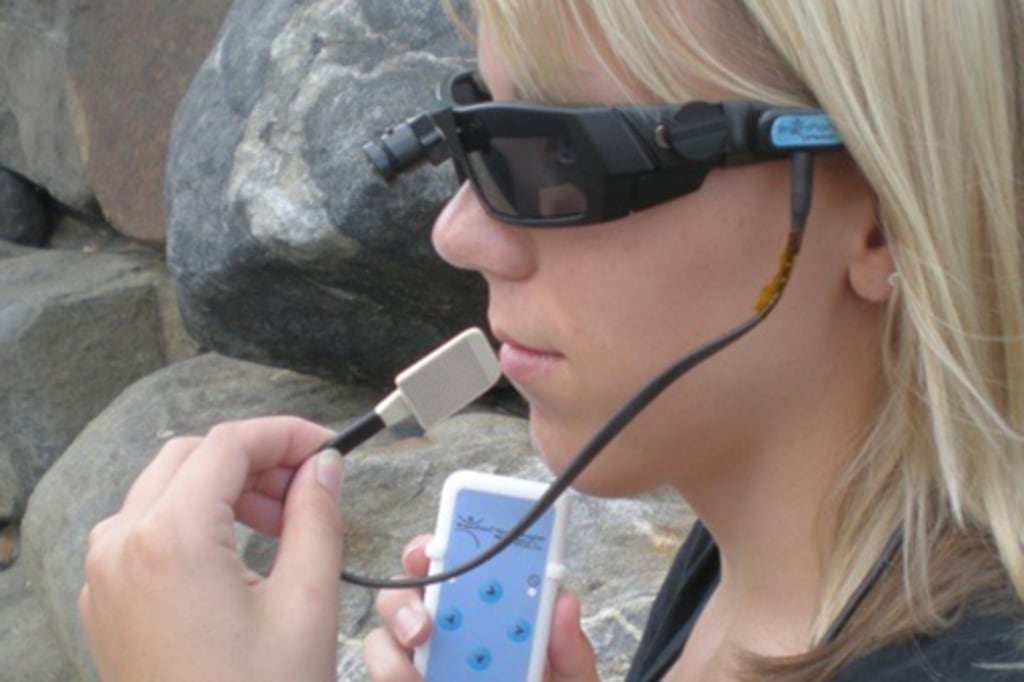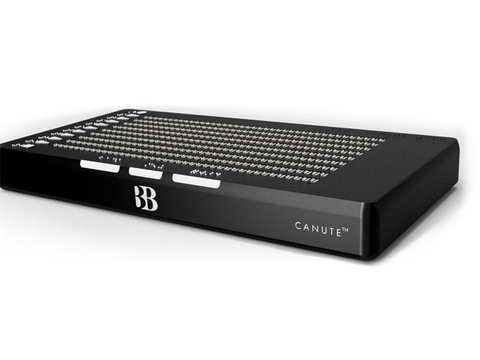Enhancing Lives With Advanced Assistive Tools for the Blind
The combination of innovative assistive tools for the blind is changing just how people experience their surroundings and communicate with their areas. What does this advancement mean for the future of assistive modern technology and its function in encouraging individuals?
Overview of Assistive Devices
Assistive devices for the blind encompass a varied variety of tools and innovations designed to improve freedom and enhance the lifestyle for people with aesthetic impairments. These gadgets accommodate numerous requirements, from navigation and mobility to interaction and daily job administration.
Among the primary classifications of assistive tools consists of mobility aids, such as white walking canes and guide dogs, which assist users browse their environments safely. Digital travel aids, furnished with sensing units and audio feedback, likewise play a substantial duty in flexibility improvement.
Furthermore, tools that assist with daily living tasks, such as adaptive kitchen area tools, Braille labels, and chatting watches, empower individuals to do jobs separately. Interaction aids, consisting of screen viewers and Braille displays, facilitate access to info and allow individuals to engage successfully with the digital world.
Moreover, low-tech services like magnifying glasses and large-print materials continue to be essential for many individuals. Collectively, these assistive tools offer not only as functional tools but likewise as crucial enablers of freedom, promoting greater involvement in a world that typically prioritizes sighted experiences. Their combination into day-to-day live is essential for promoting inclusivity and enhancing overall well-being for those with visual problems.
Cutting-edge Technologies being used
Advancement in innovation has substantially transformed the landscape of tools readily available for people with aesthetic impairments. Among the most notable advancements are clever glasses incorporated with enhanced fact, which offer real-time navigation support and object recognition. These tools take advantage of progressed cameras and fabricated knowledge to supply auditory signs, improving the user's spatial recognition and freedom.
In addition, mobile applications have actually emerged as powerful resources, allowing customers to identify money, checked out text out loud, and browse unknown environments through spoken directions. Tools such as Braille displays and refreshable Braille gadgets continue to evolve, offering smooth connection with mobile phones and computer systems, thus enhancing communication and access to details.
Wearable technology, including smartwatches furnished with voice-activated features, additionally encourages users by facilitating fast accessibility to notices and alerts without requiring aesthetic interaction. Responsive maps and 3D printing are additionally gaining traction, providing substantial representations of spaces that aid in positioning and wheelchair training.
Jointly, these innovative technologies not only enhance the every day lives of aesthetically damaged individuals yet also foster greater freedom, inclusivity, and engagement with the broader neighborhood, thus reshaping assumptions of access. (OCR devices for the blind)
Individual Stories of Empowerment
Empowerment usually arises from individual experiences that highlight the transformative impact of innovation on individuals with visual disabilities. Take, for example, the story of Sarah, a young artist that reclaimed her enthusiasm for paint via making use of a clever click for more info walking stick geared up with barrier discovery. This tool not only facilitated her wheelchair however instilled a newfound self-confidence, enabling her to browse public areas independently and pursue her innovative ventures.

These stories underscore the extensive impacts that progressed assistive gadgets can carry everyday life. By enabling individuals unbreakable reading glasses to get over obstacles, technology fosters a feeling of freedom and self-regard. Such empowerment tales serve as a testament to the potential of innovation, showing just how the right devices can considerably enhance lifestyle and open doors to new opportunities for those with visual disabilities.
Advantages of Advanced Solutions
The combination of sophisticated innovation into assistive devices considerably changes everyday experiences for those influenced by vision loss. Braille displays and notetakers. Tools such as wise canes furnished with sensing units, navigating applications, and wearable modern technology are developed to give real-time feedback, enhancing spatial understanding and minimizing the threats linked with mobility.
Additionally, progressed assistive technologies promote social incorporation by promoting interaction and communication. Voice-activated devices and apps permit people to access information and involve with their environments independently, breaking obstacles that formerly hindered their participation in educational, specialist, and social setups.
On top of that, the personalization and adaptability of these options deal with the diverse demands of individuals, thus boosting their overall lifestyle. Enhanced performance, such as object acknowledgment and text-to-speech capacities, encourages people with aesthetic problems to do jobs that they may have once found challenging. Ultimately, progressed assistive technologies not just enhance self-reliance and safety and security however likewise advertise self-respect and self-regard, permitting individuals to lead fulfilling lives.
Future Trends in Assistive Technology
As modern technology proceeds to progress, that site the landscape of assistive tools for the blind is positioned for remarkable innovations that will certainly additionally boost availability and self-reliance. Emerging fads in assistive innovation show a shift toward boosted assimilation of expert system (AI) and device understanding, making it possible for gadgets to adjust to specific user requires in real-time. These developments are expected to promote more user-friendly navigating systems that can identify barriers and supply audio feedback, substantially improving outside flexibility.
Furthermore, the development of wearable tech, such as smart glasses geared up with increased reality, will certainly permit customers to receive contextual information about their surroundings, consequently improving their spatial recognition. Furthermore, developments in haptic modern technology promise to develop tactile feedback gadgets, allowing users to regard details through touch, enhancing understanding and communication with their atmosphere.
Telecommunication advancements are likewise leading the method for remote help options, where trained professionals can provide assistance by means of video calls, ensuring assistance is conveniently obtainable. As these fads unfold, the future of assistive tools for the blind will certainly foster greater freedom, equipping individuals to browse their world with confidence and simplicity.

Final Thought
The integration of innovative assistive tools for the blind represents a significant advancement in promoting freedom and improving lifestyle. By using innovative modern technologies, these devices encourage users to browse their environments with greater confidence and autonomy. As the area proceeds to develop, ongoing r & d will likely produce also much more innovative options, even more changing the lived experiences of individuals with aesthetic disabilities and advertising a greater feeling of inclusion within culture.
The assimilation of sophisticated assistive devices for the blind is changing how individuals experience their surroundings and communicate with their neighborhoods. The integration of advanced modern technology into assistive devices substantially changes daily experiences for those impacted by vision loss.As technology continues to advance, the landscape of assistive devices for the blind is poised for impressive developments that will additionally enhance ease of access and self-reliance. Arising trends in assistive innovation suggest a shift toward increased integration of man-made knowledge (AI) and device discovering, allowing gadgets to adjust to private user requires in real-time.The integration of sophisticated assistive tools for the blind stands for a considerable innovation in cultivating self-reliance and improving quality of life.